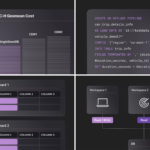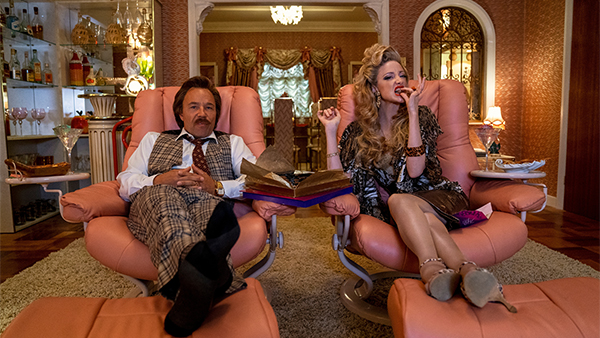Cinematographer Tat Radcliffe, BSC, chose the Cooke S7/i prime lens range paired with a Sony Venice to shoot Netflix’ much anticipated film adaptation of Matilda the Musical.
The musical is currently available on the streaming platform now in the UK and Ireland, and from 25 December in the USA and other territories.
The film is directed by Matthew Warchus, from a screenplay by Dennis Kelly based on the book by Roald Dahl, with music and lyrics by Tim Minchin. It stars Emma Thompson as Miss Trunchbull and Lashana Lynch as Miss Honey, with Alisha Weir as Matilda.
Tat had worked with Matthew on Pride (2014) but because of the scale of the project decided to adapt his usual way of working and brought in Ossie Mclean as the A camera operator. It was one of the best decisions Tat made.
Ossie got it immediately helping to oversee the bold graphic frames and movement especially during the deceptively simple looking dance sequences. The main focal lengths used were the 25mm, 32mm, 40mm and 50mm, largely shooting close and wide.
Although it was important to stay true to the spirit of the stage show the team had to calibrate any sense of artificial stage.
Tat said: “In the film version we are 90% of the time seeing it from the perspective of Matilda and we had to convey the wonder of this precocious imagination of hers; a combination of fairy tale aesthetic and down-to-earth realism (if at times somewhat fantastical!).
“To this end one of my favorite sequences was the cake eating sequence “Bruce”. It took many months to work out how best to shoot Ellen Kane’s mesmerizing choreography.
“And although incorporated in the sequence are revolving floors, stage lighting and spangly costumes the audience must never be left in any doubt that it is seeing the world through Matilda’s keen eyes.”
What Tat likes most about the Cooke lenses is that they do not shout at the top of their voices and bring attention to themselves. “All the benefits I can think of stem from what they don’t do: no funky aberrations, not much flaring, no surprises.”
Tat’s first ever musical was certainly a challenge but using the S7/i’s meant one less thing to worry about.
“I wanted a glass that could achieve a gentleness with no aberrations, a glass that was visually uncomplicated and down to earth. The S7/i’s were a no-brainer. There are big expectations for this adaptation, and I hope we’ve done it justice,” he said.






